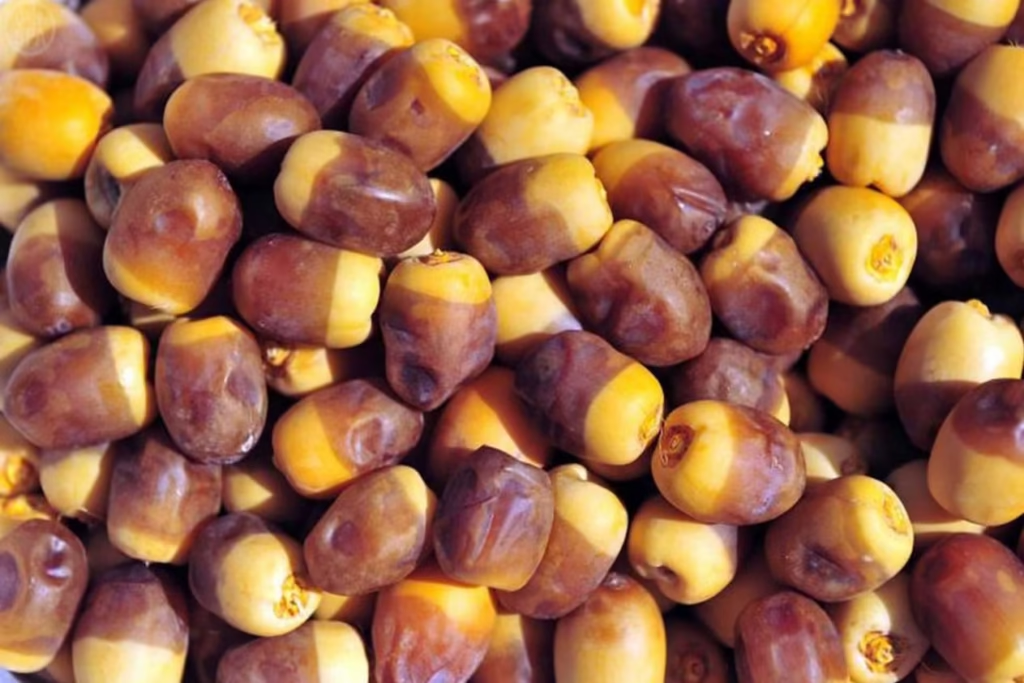Egyptian Date Varieties: Top Types and Their Origins
Egyptian date varieties are among the oldest cultivated fruits in human history, holding a special place in Arab and Islamic cultures. In Egypt, they’re not just food—they’re tradition, nutrition, and livelihood. As one of the largest date-producing countries in the world, Egypt boasts a wide range of Egyptian date varieties, each with its own unique flavor, texture, and cultural significance.
Known for their adaptability to arid climates and rich nutritional profile, date palms have flourished for centuries in Egypt’s deserts, oases, and river-fed lands. From the ancient times of the Pharaohs—who valued dates as offerings and dietary staples—to the modern era where dates are integral to Ramadan rituals and export strategies, this humble fruit has never lost its relevance.
Across the Egyptian landscape, one can find towering date palms lining rural roads, sprawling across farms in the New Valley, or dotting the ancient oases of Siwa. Egypt’s unique climate, which provides abundant sunlight and minimal rainfall, creates ideal conditions for cultivating diverse Egyptian date varieties that range in color, taste, and moisture level.
These date varieties are not just regionally distinct—they also cater to different culinary and commercial purposes. Some are best enjoyed fresh, like Bartamoda, while others such as Saeedy and Sukoty are prized for their long shelf life and use in processed forms like date paste and molasses. Others like Siwa dates hold export value and are gaining popularity in international markets for their quality and flavor.
In recent years, there’s been a resurgence of interest in dates as a superfood, boosting their appeal both domestically and globally. Packed with natural sugars, dietary fiber, and essential minerals like potassium and magnesium, Egyptian dates offer a healthy, energy-rich snack. As consumer preferences shift toward whole, unprocessed foods, dates have become a natural solution that aligns with health-conscious lifestyles.
This guide explores the Egyptian date varieties, shedding light on their growing regions, usage, and nutritional value. Whether you’re a culinary enthusiast, a farmer, a researcher, or a health-conscious consumer, these Egyptian dates offer a natural and flavorful alternative to processed sugars. Understanding each type helps deepen appreciation not just for the fruit itself, but for the heritage, labor, and ecosystem that sustain it.
From the sun-scorched oases of the Western Desert to the fertile lands of Upper Egypt, date palms thrive in diverse environments. Each region contributes a signature variety—some consumed fresh, others dried or processed into syrups and pastes. This article dives deep into Egypt’s date diversity and introduces you to its finest treasures.

Main Egyptian Date Varieties
1. Sukoty Dates
Grown primarily in Aswan and Nubian villages, Sukoty dates are dark, dry, and incredibly sweet. Their low moisture content makes them ideal for long-term storage and for producing date paste or syrup. They’re a staple in southern Egyptian households and hold traditional value in local festivals.

2. Saeedy Dates
Common in Upper Egypt—particularly in Minya, Assiut, and Sohag—Saeedy dates are firm, dry, and golden-brown. Their coarse texture makes them perfect for grinding into flour or mixing with nuts to create traditional snacks. They’re also favored for their long shelf life.

3. Bartamoda Dates
Mostly grown in Fayoum, Bartamoda dates are semi-dry and medium-sized with a subtle caramel-like taste. Their soft texture makes them suitable for eating fresh or incorporating into baked goods and desserts. They’re especially popular during Ramadan.

4. Ajwa (Egyptian variety)
Although Ajwa is widely known as a Saudi variety, a local version is cultivated in Egypt’s Bahariya Oasis and New Valley. It features a rich black hue and soft texture, often used in paste form or mixed with nuts. It’s high in iron and perfect for energy-boosting snacks.

5. Siwa Dates
Known for their reddish hue and semi-dry consistency, Siwa dates are one of Egypt’s top export varieties. Grown in the Siwa Oasis, they are prized for their sweet, fig-like taste and high nutritional content. Their consistent quality makes them highly sought after in global markets.

Nutritional & Health Benefits
Egyptian dates are rich in fiber, natural sugars, and essential minerals like potassium and magnesium. They offer instant energy, improve digestion, and act as powerful antioxidants. Ideal for athletes, fasting individuals, and those seeking healthier sugar alternatives, dates remain one of Egypt’s best natural superfoods.
Challenges & Agricultural Development
Despite Egypt’s global leadership in date production, challenges remain. Issues like inadequate packaging, poor marketing, and limited cold storage affect the sector. However, government initiatives and private-sector investment are helping modernize the industry. Projects like the New Valley Date Industrial Complex aim to boost exports and support local farmers.
Conclusion: A Natural Treasure from the Nile
Egypt’s date varieties are more than agricultural products—they’re part of the country’s heritage. From the robust Saeedy to the luxurious Siwa, each variety represents a story of land, people, and survival. With global demand for natural foods on the rise, Egyptian dates have a golden opportunity to shine.
Investing in better packaging, branding, and distribution will help these treasures find their way to more homes around the world. For now, whether eaten plain, blended into smoothies, or stuffed with almonds, Egyptian dates offer both flavor and tradition in every bite.
Is Frozen Fruit Healthy? Facts You Should Know
To explore Egypt’s national date strategy, visit the Information and Decision Support Center (IDSC).






